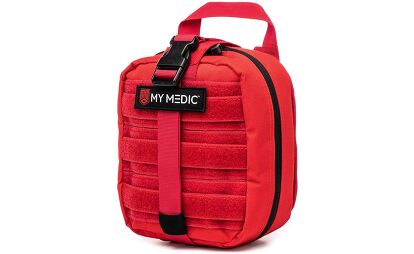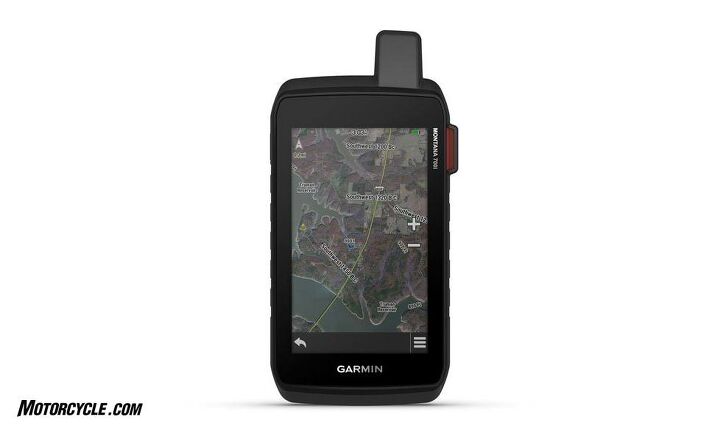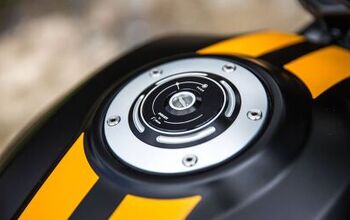Motorcycle First Aid: What You Need To Know

A little training and preparedness could be the difference between life and death
The first thing you need to know is that we are not trained professionals. The second thing you need to know is that we’re not trained medical professionals either. Now that we’ve got that out of the way, we wanted to put together a basic overview of what a macro look at motorcycle-specific first aid and best safety practices might entail. We won’t be touching topics like, how to clean wounds, how to splint a leg, or how to reattach an appendage. I mean, yea, we’ve seen Frankenstien, we could probably stitch someone back together. Seems easy enough, but we’ll leave that to the pros and mad scientists.
Really, this article is meant to be a broad overview of some of the tools and tips to get you on your way to being able to handle and administer first aid should the circumstance call for it. Also something to consider, get your riding buddies in on the idea, because if you’re the only one well-prepared and something happens to you, all your training and preparedness (or at least most of it) will be for naught.
Take a class
Take some first aid training classes, and/or refresh previous training or certifications. This is the best way to ensure you’ll be ready to deal with an unfortunate situation should one arise. You’ll have the correct tools, not just in your first aid kit, but in your toolbox of knowledge, too.
There are a lot of first aid and first responder classes available. These training classes can cover everything from situational awareness to how to treat specific injuries. Some programs cover all of the above. A quick Google search will yield dozens of results, but there are also a few motorcycle-specific programs that put a focus on motorcycle safety – like the programs that Road Guardians run.
First Aid Kits
They’re not all created equal. Not to mention, if you’ve never opened that cheap one you got from Amazon that immediately got thrown in your pack for a long trip, it’s probably not going to do you much good when you need it. Even if you did do a bit of research and secured yourself a first aid kit that actually includes useful items that aren’t cheap junk, if you don’t know how to use said items, you’re not going to be prepared when the time comes to use it.
Companies like My Medic build comprehensive first aid kits with quality products. Chances are, if you look for the cheapest kit you can find, even if it has all of the tools you think you’ll need, those tools may not be reliable when you need them most.
Devices
Personal Locator Beacons (PLB) or satellite messaging devices provide great peace-of-mind should the unfortunate happen. The crew here at MO have used Spot devices in the past during stories and while testing off-road in the desert. Evans was even able to rent a Spot tracker back in 2018 to use during his ride from Texas to California on the then-new Honda Gold Wing.
MO Tested: Spot Gen3 Rental Review
PLBs are satellite linked devices that send an SOS signal of your location. These SOS calls are monitored by the National Oceanic and Atmospheric Administration (NOAA) which are then filtered through different agencies to alert local response teams. PLBs must be registered and typically do not require a subscription like satellite messaging devices.
Satellite messengers, like the Spot devices mentioned above, also use satellites to send SOS messages; additionally, these devices can offer a wide range of communication options aside from just sending SOS messages. Garmin’s inReach technology is another example of a satellite messenger. Spot and Garmin both offer a plethora of products ranging from simple to high-tech, such as Garmin’s Montana 700i, which incorporates its inReach technology into a GPS unit. Most of these units will allow communication with others either two-way or one-way that can help keep your friends, co-workers, or family up to date with your situation in addition to providing SOS capability. These units usually have rechargeable batteries whereas PLBs do not – but they do require plans to activate and use which vary widely.
At the scene
After the spit hits the fan, or pavement, or what have you, it’s good to have a plan in your head of what needs to go down, rather than just freaking out and running to your fellow rider’s side. First things first, you can’t help someone if you get injured yourself. Get yourself and your motorcycle out of the danger/impact zone, and turn your emergency flashers on if you’ve got `em, blinkers if not. Then evaluate the environment further to try to make it as safe as possible, such as letting oncoming traffic know there has been an incident and to slow down or stop. This is particularly important if you’re in a twisty road environment with blind curves on either side or if it’s dark outside.
Try to keep calm and check in on the injured rider, and don’t move them or let them move, unless absolutely necessary – at least until you and the patient both agree their neck and back feel okay. Best case, the victim is conscious and coherent. Worst case, if they’re not awake, you’ll need to check to see if they’re breathing, and if not you’ll really wish you’d had real first-aid training. You can even take a Red Cross online CPR course here.
Try to evaluate the best you can with that class you took (you did take a class, right?). If the injury may be life-threatening or you’re unsure, it may be time to bust out your Spot (or Garmin inReach, or other related devices) and make the call for help.
If the injury isn’t as severe and you can determine it to be isolated, you can probably use that well-thought out first aid kit to provide some relief until emergency personnel arrive. Keep in mind that you may want to hold off on administering pain medicine if possible and let the professionals make that call on scene, as some medications can limit a doctor’s ability to treat you immediately. If you do administer any medication, keep track of what it was and when it was given to relay to the medical pros. If you’re unsure at all about where all someone may be injured, do not attempt to remove gear. A general rule of thumb is to, again, wait for the EMTs to arrive to assess the situation.
If it’s unlikely that you’ll be able to get an ambulance to your location – say if you’re riding off-road – start developing a plan as soon as possible to get the person back to civilization to receive treatment.
The best advice I’ve ever been given was, “Include a doctor in your riding group.” Seems easy enough, right? I had an orthopedic surgeon in my group for my first 8-day ride in Baja. While that sounds comforting, it’s best that everyone in the group has first aid training, because you never know who might run into an issue.
We are committed to finding, researching, and recommending the best products. We earn commissions from purchases you make using the retail links in our product reviews. Learn more about how this works.
Become a Motorcycle.com insider. Get the latest motorcycle news first by subscribing to our newsletter here.

Ryan’s time in the motorcycle industry has revolved around sales and marketing prior to landing a gig at Motorcycle.com. An avid motorcyclist, interested in all shapes, sizes, and colors of motorized two-wheeled vehicles, Ryan brings a young, passionate enthusiasm to the digital pages of MO.
More by Ryan Adams




































Comments
Join the conversation
I would skip the first aid kit - most have an odd assortment of stuff you will never use. The essentials:
4 x 4s
Kling wrap or a generic version
2 Cravats
Gloves
If you have some more room add a SAM Splint
Those are by far the items I used the most in 15 years of Ski Patrol.
I was trained in rescue situations in the ocean, which only rarely involves rapid blood loss (the odd shark attack excepted), but in a motorcycle accident there is likely to be blood, sometimes way too much of it. Keeping that blood inside the injured rider where it belongs should be a primary focus. Then breathing, then everything else. It helps to have two people, maybe three so the third can go off to find help in areas where there is no cell service and everyone left their satellite phone at home.